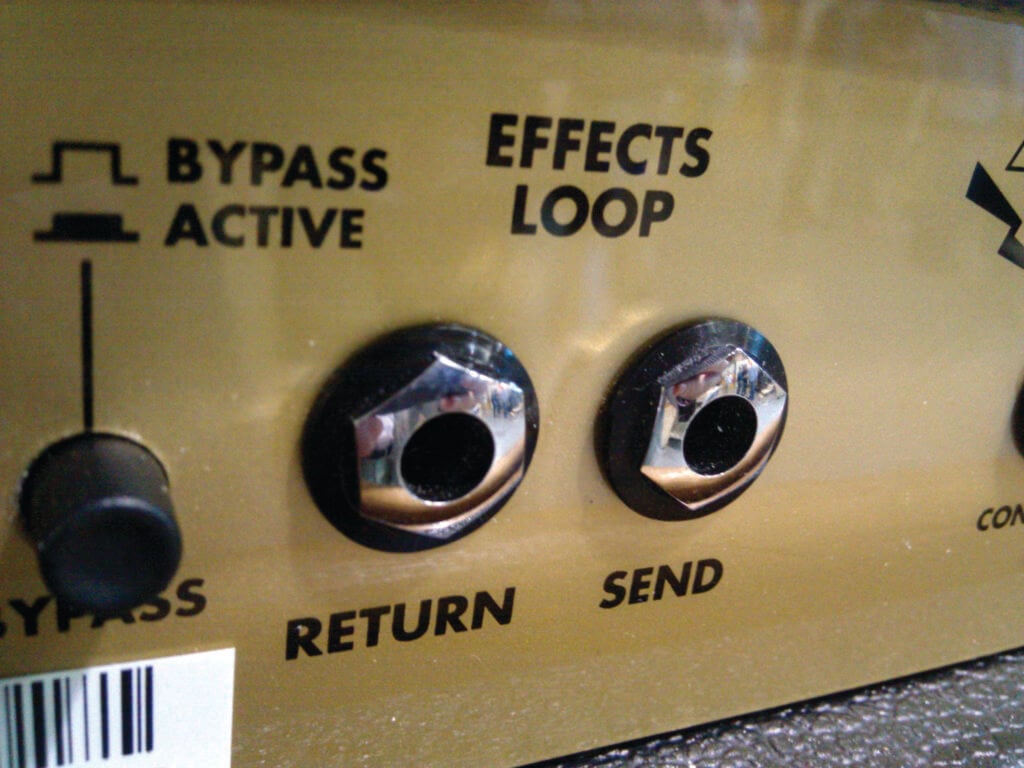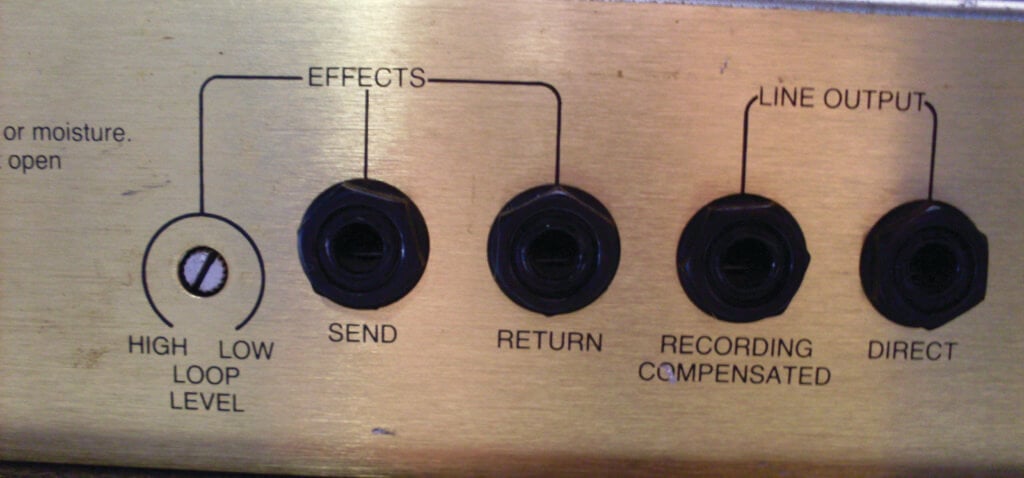FX Loops and You: Unlock Better Tonal Possibilities
What is an effects loop, you may ask? Well, it’s an “opening” on an amp allowing effects to be run after the preamp, and before the power amp section. When effects are connected in this manner, the amp’s preamp distortion/gain comes first, THEN the effects, then the power amp brings the overall volume. Typically, the kinds of effects that work best in an amps effects loop are time based: modulations, delays and reverbs. Tone-based effects like drives, EQ’s and wah pedals generally don’t sound great in this application, and running these in front of an amp will sound better nine times out of ten.

photo by James Cridland, used under a Creative Commons License
A typical guitar rig runs stompboxes in front of an amp, and that makes sense. However, if that amp is doing all the drive and distortion sounds, running things like reverbs, delays and choruses into an amp that’s overdriven or distorted already can make for a pretty muddy tone. Yes, this is how it was in the old days, and no one had any issue with Eddie Van Halen running an Echoplex, Flanger or Phase 90 into the front of his overdriven Marshall, but when Mr. Van Halen designed his 5150 amps, he wanted an effects loop for his time-based effects; EVH knew the benefits of this modern feature.
Some multi-effect pedals like Boss’s GT-1000 have a “four cable method” that can run the time-based effects in through an effects loop, while the drives, EQs and such can be run into the front end of the amp. There are guitar interface boxes made by companies like Vertex Effects, as well as Schmidt Array, that allow a stompbox-based pedalboard to work with the four cable method when desired, and work without one when that situation is happening. So, if you’re backlining and requested a Fender Hot Rod Deluxe (which has an effects loop) and you get a Fender Deluxe Reverb (which has no effects loop) you’ll be set either way.
Just as not all amps are created equal, nor are all effect loops. Some amps typically are meant to run line level effects such as rack units, not instrument level effects, like pedals. Thankfully many amp manufacturers understand the overwhelming presence of pedals and have set up their effects loops to work with stomp boxes, or are selectable for line or instrument level effects.
The effect loop is also sometimes labeled “preamp out” and “power amp in” on an amplifier’s panel. A great way to use this is running a line from the preamp out to an external power amp, for providing more power to run extra guitar cabinets. The power amp in connection can also be used to “hijack” an amp’s power amp section. Plugging a guitar into a pedal that’s connected to the power amp in section can bypass the preamp altogether and re-define the sound entirely on the pedal. Plugging in a pedal like a TS9 or a Boss DS-1 may not be desirable, as while these pedals are “preamps,” the tone adjustment is limited. A better option would be a true pedal preamp, like one of Revv’s G Series pedals or one of Origin Effect’s preamp units.

photo by Roadside Guitars, used under a Creative Commons License
As we mentioned the Fender Hot Rod Deluxe previously, these are great amps, perfect as a pedal platform, however these are a VERY loud 40Watts. Having the volume level on 3 can deafen a drummer in a practice room, so never mind getting an amp tone that’s at a reasonable volume. BUT there is a solution, running a resistive load in the effects loop. What’s a resistive load you say? Well, a simple resistor, such as a potentiometer (an adjustable resistor) can do that. There are schematics online as to how to make one with an enclosure, a couple of 1/4” jacks, some wire and a pot, or for simplicity (and peace of mind) JHS has a device called a lil Black Box that can be connected to an effects loop with some patch cables, and this acts as a “master-master volume control.” Get your amp sounding as you like it and use the knob on the device to attenuate the volume level so as to not destroy your bandmate’s hearing. It’s a safe way to tame a tube amp with no modifications.
As always, read your manual before plugging stuff into and out of your amp’s effects loop. Your mileage may vary, but it’s an option that often gets overlooked, and could help your overall guitar sound with just a few adjustments to your existing rig. Adding modulation and time-based effects simply sound better AFTER the preamp in almost all situations, but please feel free to experiment and add fx in your signal chain to taste.
